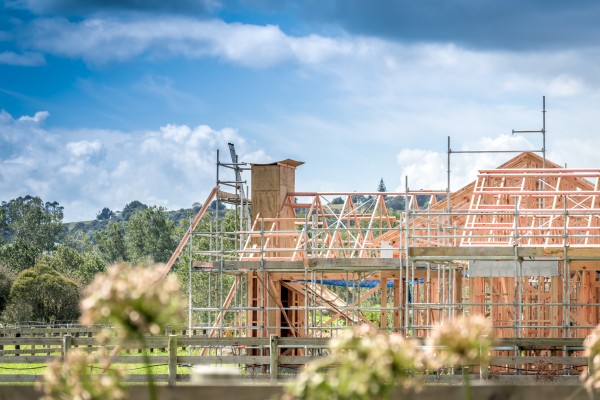Housing policy is building up to be the key election issue again. In this blog I reflect on the importance of the role of the New Zealand Government in improving access to affordable housing. I look at what the Government been doing to increase quality public housing and to reduce homelessness and why the public housing waiting list is getting longer.
The challenge
Healthy, safe, affordable housing is a critical foundation of population health and wellbeing. Shortages in many OECD countries, including New Zealand and Australia, have led to increasing homelessness. This is not a new phenomenon. It has been recognised by numerous academics and commentators for more than a decade. However, prevailing neo-liberal policies largely over the last decade, led to little investment in public housing.
By 2016, the lack of affordable housing was becoming a widely recognised problem for New Zealand. When the Labour Coalition Government came into power in 2017, one of their policy pledges was to solve the housing crisis. They immediately commissioned a Housing Stocktake. It showed home ownership was at a 60-year low, with only half of adults owning houses. This is in a country, which traditionally had one of the highest rates of home ownership in the world and took pride in being a property-owning democracy. Demand had outstripped supply. The lack of affordable new housing came at a time when immigration was at an all-time high. The private sector had largely withdrawn from the affordable market. House prices had risen at twice the rate of income growth. One in 100 people were homeless.
There were growing ethnic inequalities, with rates of home ownership among Europeans (57%), being double those of Māori (28%), and triple those of Pacific peoples (19%). Low-income people, sole parents and children were more likely to be in private rentals of poorer quality with no security of tenure, or homeless.
Changes in political philosophy
The current Labour Coalition Government has prioritised active regulation, investment and construction in housing. Encouraged by the World Health Organization’s healthy housing guidelines, the Coalition Government incorporated minimum temperature standards in the Healthy Homes Guarantee Act. These standards were designed to improve the quality and security of rental properties. The Government established a new Crown Agency, Kāinga Ora – Homes and Communities. Its main subsidiary is Housing NZ, the government housing provider. Kāinga Ora’s mandate is to transform housing generally and encourage sustainable urban development. Its job is to work closely with the private and community sectors to improve the supply and quality of housing, recognising that increasing supply requires durable strategies and incentives.
The key element of Kāinga Ora’s strategy is to increase the stock and quality of public housing in order to reduce homelessness and demand for emergency housing in motels. Public housing had been reduced to 3.4 percent of the total housing stock in 2017, from 4 percent in 2008. In 2018-19, Housing NZ built 1,461 state rental homes, the largest number in 20 years. Currently there are 2,275 houses under construction, plus another 800 or so Kiwibuild properties. However, this is not enough to keep up with the very high demand.
To complicate matters, Kāinga Ora does not control the waiting list for public housing. This task falls to the Ministry of Social Development and its public housing waiting list has more than doubled since 2017, from 6,000 individuals or families to 14,500 at the end of 2019. This increase is in part due to steep rises in private market rents. Another major factor in the increase is that the Government changed the rules and culture surrounding support for public housing tenants and made it easier for people to go on to the public housing list. They also abandoned the previous eviction policy and moved away from using motels as emergency housing.
This is a major policy shift away from the previous “small-state” philosophy characteristic of neoliberal governments internationally. The former National PM John Key, who grew up in a state house, characterised state housing as “mean streets” where people lacked ambition. Former National Deputy PM English called Housing NZ “the biggest slum landlord in the country”. National’s housing policy was, and remains, to sell the state stock to private developers and community trusts.
Britomart, Wellington development completed 2019. Image reproduced with permission from Kāinga Ora.
State investment in housing
The current Government can be characterised in Mariana Mazzucato’s terminology as an entrepreneurial state. It strategically uses state assets, innovative finance and technology and takes risks necessary to create public housing infrastructure. It is not deferring the maintenance of public housing. The Government is investing in intensive remediation to ensure its existing stock is fit-for-purpose for another 50 years. Kāinga Ora sets standards well above the current, outdated Building Code, which is also currently being reviewed.
The Government is increasing the number of affordable houses for sale under Kiwibuild. Kiwibuild got off to a slow start, partly because of the shortage of builders and increasing bankruptcies in the building sector. The reinvigorated Kiwibuild programme is now being managed and underwritten by Kāinga Ora, which aims to use economies of scale to raise standards in both public and private sectors.
The Government is building new housing to Homestar Six sustainability standards. Kāinga Ora has relational contracts and alliances with civil engineers and preferred private building firms. These contracts emphasise safety, apprenticeships and employers paying the living wage to employees and sub-contractors. The explicit aim of this building programme is to increase affordable public and private housing in medium-density housing suburbs and urban areas.
In 2017, the National Government, after a 19-year hiatus, had introduced a borrowing protocol to allow Housing NZ to raise private funds. In June 2018, Housing NZ, which had housing and land assets of NZ$28.7 billion, entered the capital market with sustainability bonds. In 2019, Labour Finance Minister Robertson introduced a “Wellbeing Budget” that balanced the historic focus on economic growth with an emphasis on social, natural (environmental) and human capital development. The Sustainability Financing Framework was refined to ensure it aligned with the Treasury’s Living Standards Framework and in September 2018 issued $600m of bonds. All bonds on issue were renamed “Wellbeing Bonds”. The bonds conform with the International Capital Market Association’s sustainability bond principles. In January 2020, the Government increased the borrowing limit and announced that Kāinga Ora (Housing NZ’s successor) could raise up to $7.1 billion in bonds through Kainga Ora’s Sustainability Financing Framework. These important developments have received markedly little attention.
Kāinga Ora is using these funds for social and affordable housing within socially inclusive communities. It has committed to using low carbon construction, important for the 2018 Carbon Zero Act. While international interest rates are at a historical low, these sustainability bonds are attractive to international buyers. They align with the Government’s commitments to international accords, such as the 2015 Paris Agreement on Climate Change and the UN’s Sustainable Development Goals.
Social goals
The Government has tasked Kāinga Ora to be a world-class public housing landlord, committed to partnering with the private sector, Māori, local and central government and others on urban development projects. This partnership focus echoes the 1935 Labour Government’s state housing programme up to the 1950s, with two fundamental differences: urban planning is no longer modelled on English garden suburbs and Māori are no longer restricted to the role of tenants, but are working in financial partnership at all organisational levels. The emphasis is on helping to develop capacity to work with and for Māori to increase the number and cultural appropriateness of houses and community development. An example of this approach is an agreement signed last year with Ngāti Toa in Wellington, transferring 900 state houses to the tribe.
A tenant welcoming event held at the Jennings Jersey development in Mt Albert, Auckland. Image reproduced with permission from Kāinga Ora.
Conclusion
So waiting lists are rising while the supply of affordable housing is increasing for two main reasons: it takes time to ramp up large scale housing developments, and demand was previously suppressed. The current Government’s entrepreneurial approach and wellbeing policies contrast markedly with the preceding government’s. The establishment of Kāinga Ora reflects aspirations to enhance the wellbeing links between housing and urban development. The outcomes need to be assessed annually, but there is also a need to take a long-term perspective.
Competing interest
Philippa Howden-Chapman is a Sesquicentennial Distinguished Professor of Public Health at the University of Otago, Wellington. She is Co-director of He Kāinga Oranga/Housing and Health Research Programme and director of the New Zealand Centre for Sustainable Cities. She was Chair of the World Health Organization’s Housing and Health Guidelines Group. She is a director on the Board of Kāinga Ora-Homes and Communities. The views expressed here are hers and do not necessarily reflect the views of the Board of Kāinga Ora.



